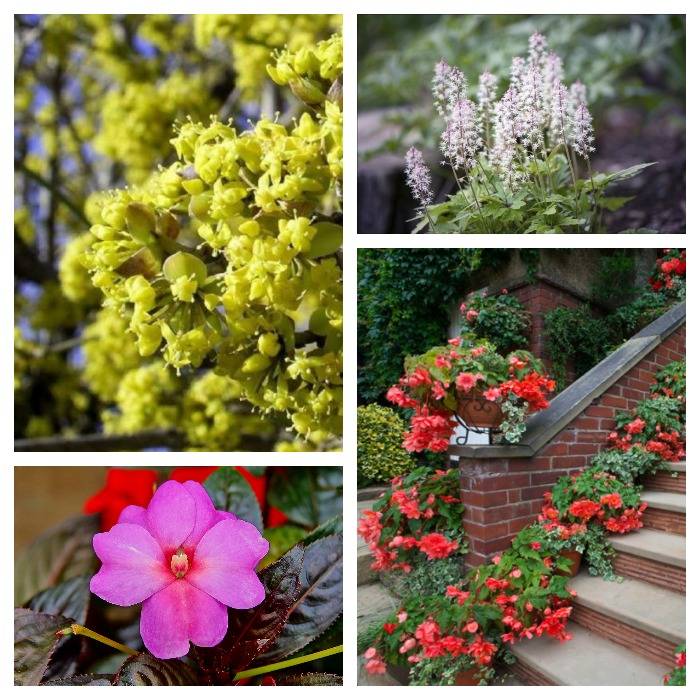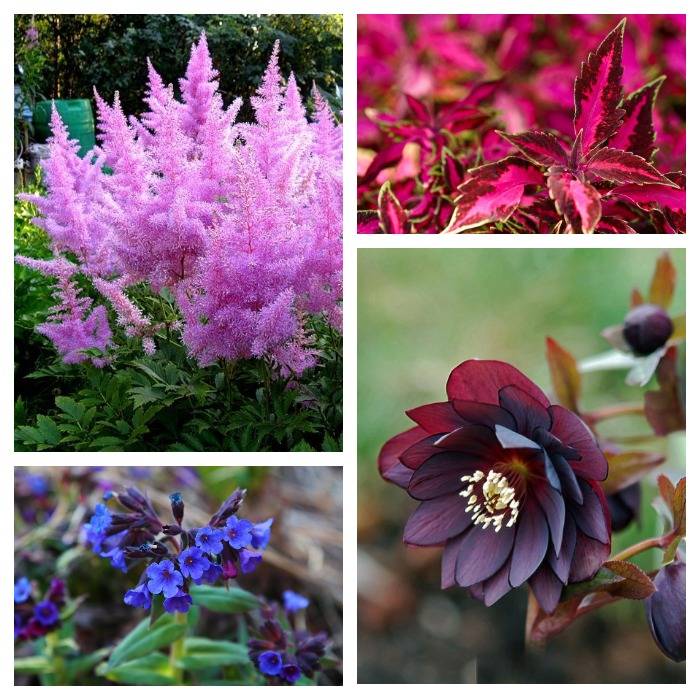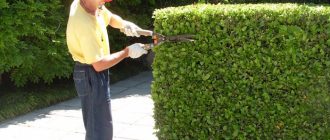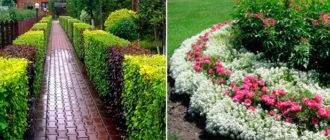It is generally accepted that all plants need good lighting for lush growth. But this is not the case. There are many flowers and shrubs that grow beautifully in the shade and do not lose their beauty from this.
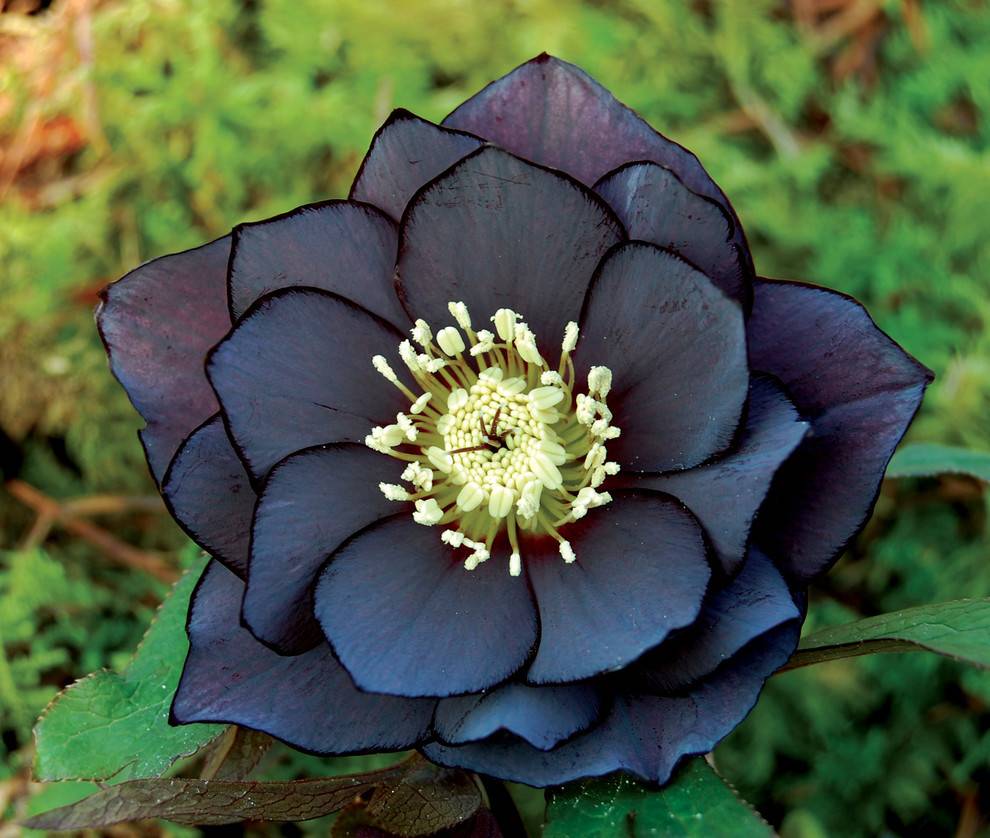
Hydrangeas
They bloom from late spring - early summer until autumn, depending on the selected variety. They do not need bright lighting, just a little morning sunlight is enough for the buds to be filled with colors. They are unpretentious in leaving and with the right winter shelter they will delight with more and more buds every year. The only thing that hydrangeas do not like is close proximity to trees.
Chaenomeles
This shrub loves partial shade, reaching a height of 0.8 m to 1.5 m, depending on the variety. Under good weather conditions, it begins to bloom in late April - early May, after which it blooms again closer to autumn. Chaenomeles flowers come in a variety of colors, from scarlet to cream.
Lady fern
The plant loves shade and loamy soil, grows well under tree branches and shaded fences that protect the fern from direct sunlight. Doesn't like abundant fertilization, but would be grateful for additional soil drainage before planting, for example? oak bark or expanded clay.
Dicentra ("Broken Heart")
The dicenter got its name due to the unusual shape of flowers in the form of a heart. Depending on the variety, the flower can be pink, white or yellow. This bush is quite unpretentious to care for, it will grow well both in the sun, then there will be more flowers, and in the shade, in which case the leaves will prevail.
Dogwood
The dogwood species is very diverse, it includes trees, shrubs and herbaceous perennials. Decorative dogwood can grow both in the shade and on the sunny sides of the site. Its varieties differ in the shape and color of both leaves and flowers. Frost-resistant species have taken root in Russia, which require careful shelter for the winter in the first years after planting.
Garden begonia
Begonias have over a thousand varieties, so every gardener will find exactly what he needs for himself. They bloom from spring to autumn, and are very popular when decorating flower beds and mixborders. They love partial shade, moist soil, they coexist well with trees and shrubs.
Impatiens
It is known in Russia under the name "Vanka wet", "Impatient". The flowering plant is a short bush about 50 cm long with a lush cap of bright flowers. The subtropics of Asia and Africa are considered its homeland, in Russia it grows unpretentiously in humid shaded areas of the garden, the bright sun contributes to the fading of flowers and leaves of impatiens.
Tiarella
Tiarella is perhaps one of the few plants that thrives only in the shade. In late spring, it blooms with a light cloud of delicate flowers, and in late autumn it changes the color of the leaves from green to reddish, continuing to adorn the site even in winter.
Astilba
Astilba not only grows well in the shade of the site, but also tolerates Russian frosts well and is resistant to almost all garden pests. Not only flowers, but also leaves are distinguished by their beauty. The plant blooms from mid-June to August.
Coleus
Coleus leaves are very unusual in their color, depending on the variety they are different. In the sun, the flower stretches out and loses its attractiveness, but in the shade from the plantings of the Coleus, you can form a beautiful lush bush. It is unpretentious in maintenance and does not require any special soil quality.
Pulmonaria (Medunitsa)
This short bush is known for its small flowers, similar in the shape of inflorescences to small bells of pink, lilac or purple shades that appear in spring.The lungwort grows violently and blooms in the shade, it is quite unpretentious in care, it tolerates Russian winters well.
Heleborus (hellebore)
Winter-hardy shade-loving perennial, which pleases with the first flowers in late April - early May. Reaches a height of 30 cm and has about 20 varieties, some of which are poisonous.
Spotted lilies
Lilies are bulbous perennials, they can reach one and a half meters in height. Lilies have a huge number of varieties, some of them are not suitable for growing in the middle lane. But correctly selected lilies will be a real decoration of any site, they love partial shade, but you should not place them next to trees.
Caladium
Although Caladium does not bloom, its leaves have a very bizarre shape that will be the highlight of any mixborder or flower bed. The purpose of the caladium is purely decorative, and it is suitable only for the spring-summer period, for the winter it should be dug up and transplanted into a pot until next spring.
Monarda (Bee Balm)
This flower is famous for its unique aroma and medicinal properties. Grows best in the shade, is a beautiful dead wood. Monarda blooms from mid-June to September. The plant is resistant to both drought and frost, therefore it is popular among gardeners.
Lily of the valley
What could be more beautiful than the first tender lilies of the valley that adorn the site and remind of the approach of summer with their appearance! They grow best in the shade of trees, they like slightly alkaline moist soil.
Myrtle
Myrtle is great for forming a hedge, but is often found as a stand-alone plant. Feels good in the shade, but in the sun the flowering of myrtle will be more abundant. Garden pests love him very much, so it is important not to miss the first signs of attacks and diseases.
Hosta
The plant has many varieties, which, depending on the color of the leaves, will look spectacular both in the shade and on the sunny side of the site. Dark green hosts are perfect for disembarking in the shade of a house or fence, and variegated ones - in bright flower beds flooded with sunlight.
Heuchera
Heucheras are suitable for shady cultivation and for location in sunny areas. These low-growing plants have bizarre colorful leaves that will decorate the site from spring to winter. In leaving, geykhera are unpretentious, it is enough to spud them once a year and provide a drainage system when disembarking.


